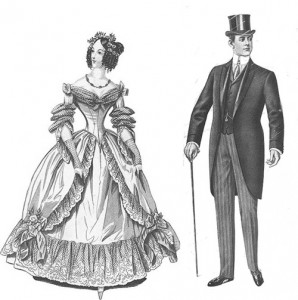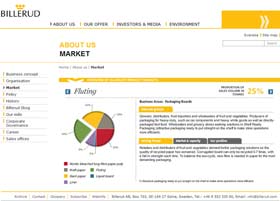Recently, I went looking for a report on the website of a fairly well-known company, so of course I stopped by their Careers page—and through a series of events, I ended up noticing something that wouldn’t be obvious to most visitors. But even if it won’t be seen by the public, I think it’s important for two reasons: (a) no one caught it in-house, and (b) it suggests a pattern of thinking that seems problematic, even though it’s surely not intentional.
In order to be kind to the company in question, I’ll disguise the specifics, but here’s slightly altered version of “the scoop”:
To get the report I wanted, I had to register. To register, I had to select a “title.” Let’s say my selected title was “Channel Manager.” There didn’t seem to be any special benefit to having a title, but once I had picked one, it followed me to every page on the site. And next to my title at the top of the page was a small picture (it definitely looks like a stock photo, not a real employee) which is presumably meant to represent a “Channel Manager.”
I couldn’t help wondering what the purpose of the whole title idea might be, so I decided to try on different titles and see what changed. Actually nothing important seemed to alter according to my title, in terms of the information presented. But–I did see a different picture every time. And that’s where I noticed . . .
Stereotyping!
If you took a list of the two dozen or so possible titles and had ten random people divide the titles into “gender piles,” I’ll bet the piles would exactly match the pictures on this site. Titles/descriptions that had words like strategy, architecture, or infrastructure got a man’s picture. Titles that had something to do with marketing or managing got a woman’s picture. A couple of exceptions, but overall, a pretty noticeable pattern.
As mentioned, this pattern probably won’t be noticed by visitors, because most won’t try out more than a couple of titles. And if you go straight to the Careers page without registering on the main site, you won’t even have a title, so it’s moot. But if you do register, the title will show up any time you go to the Careers page, and that’s how I got started down this particular rabbit trail.
Once I focused on the Careers page, the plot thickened a bit. Let’s set aside the whole matter of titles, and just assume the visitor came to the Careers page without any previous picture experience. As they looked around the site, they would find (all on a single tab) four employee profiles, each with a real photo of a real person. And all four are men.
I doubt very much that this company is a hot-bed of stereotyping or gender bias. I doubt anyone there even realizes that this unintended message has taken shape on the website. But–that’s exactly the problem.
One other note: The “title” pictures were also somewhat lacking in ethnic diversity, but I left that out in order to focus on the gender point. As for ethnic diversity in the employee profiles . . . zero. So at that point, you really do have to wonder who’s minding the messaging.

 The
The 
